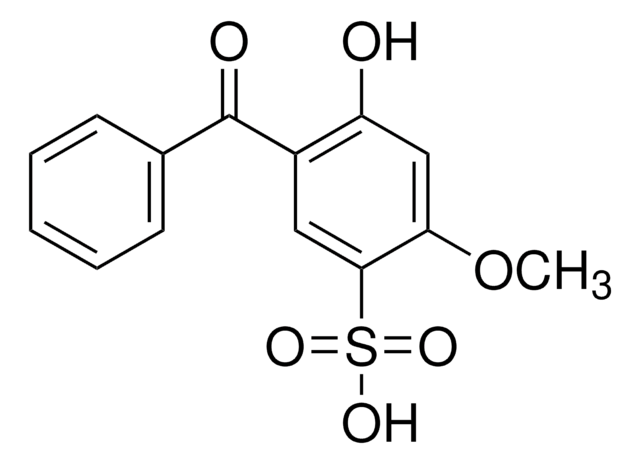10368
trans-Anethole
analytical standard
Synonym(s):
4-Propenylanisole, trans-1-Methoxy-4-(1-propenyl)benzene
About This Item
Recommended Products
grade
analytical standard
Quality Level
Assay
≥99.5% (GC)
shelf life
limited shelf life, expiry date on the label
contains
~0.05% 4-tert-butylcatechol as stabilizer
technique(s)
HPLC: suitable
gas chromatography (GC): suitable
refractive index
n20/D 1.561 (lit.)
n20/D 1.561
bp
234-237 °C (lit.)
mp
20-21 °C (lit.)
density
0.988 g/mL at 25 °C (lit.)
application(s)
cleaning products
cosmetics
flavors and fragrances
food and beverages
personal care
format
neat
storage temp.
2-8°C
SMILES string
COc1ccc(\C=C\C)cc1
InChI
1S/C10H12O/c1-3-4-9-5-7-10(11-2)8-6-9/h3-8H,1-2H3/b4-3+
InChI key
RUVINXPYWBROJD-ONEGZZNKSA-N
Looking for similar products? Visit Product Comparison Guide
General description
Application
Biochem/physiol Actions
Other Notes
Signal Word
Warning
Hazard Statements
Precautionary Statements
Hazard Classifications
Aquatic Chronic 2 - Skin Sens. 1
Storage Class Code
10 - Combustible liquids
WGK
WGK 2
Flash Point(F)
213.8 °F
Flash Point(C)
101 °C
Personal Protective Equipment
Choose from one of the most recent versions:
Already Own This Product?
Find documentation for the products that you have recently purchased in the Document Library.
Customers Also Viewed
Our team of scientists has experience in all areas of research including Life Science, Material Science, Chemical Synthesis, Chromatography, Analytical and many others.
Contact Technical Service










